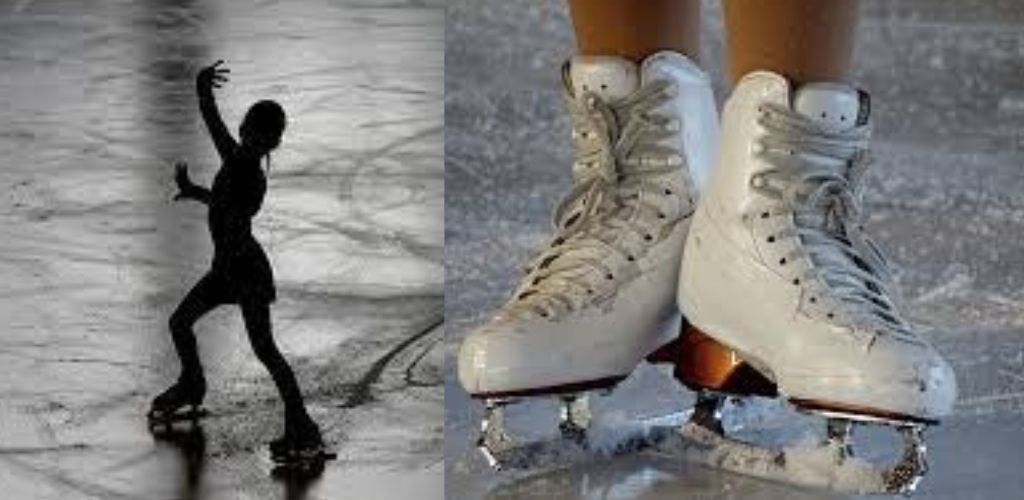Let’s Find out know about the details of skating and know who invented figure skating and this history.
Trailblazers of the game. A Composition on Skating (1772) by Robert Jones, a British chap, is clearly the primary record of figure skating. The game had a confined and formal style until American Jackson Haines presented his free and expressive procedures in view of dance development during the 1860s.
The historical backdrop of figure skating extends back to ancient times. Crude ice skates show up in the archeological record from around 3000 BC. The Dutch added edges in the thirteenth and fourteenth hundred years. Global figure skating contests started showing up in the late nineteenth 100 years; in 1891, the European Titles were introduced in Hamburg, Germany, and in 1896, the Big primary showdown was held in Holy person Petersburg, Russian Realm. At the 1908 Summer Olympics in London, Britain, figure skating turned into the primary winter game to be remembered for the Olympics.

1. Archaic exploration and earliest verifiable documentation :
The specific time and interaction by which people originally figured out how to ice skate are obscure. Crude creature bone ice skates have been tracked down in Scandinavia and Russia, tracing all the way back to around 3000 BC.
Lidwina’s fall, a 1498 woodcut.
The earliest clear, composed notice of ice skating is found in a book written in the twelfth hundred years by William Fitzstephen, a priest in Canterbury. In the work, focused on Thomas Becket, he portrays a scene occurring beneath the northern city walls of Canterbury throughout the colder time of year:
assuming that the fields in Finsbury and Moorfield freeze solid, youngsters from London play. A portion of the kids has connected issues that remain to be worked out on lower legs, and convey very much worn sticks. They fly across the ice like birds or all-around terminated bolts. Abruptly, two youngsters will run at one another, sticks held up high. They then assault each other until one tumbles down. Frequently, the youngsters harm their heads or break their arms or legs…
The sticks that Fitzstephen alludes to were utilized for development, as the crude bone-made ice skates didn’t have sharp floating edges like present-day ice skates. Adding edges to ice skates was created by the Dutch in the thirteenth or fourteenth 100 years. These ice skates were made of steel, with sharpened edges on the base to help advancement. The development of current ice skates has remained to a great extent the equivalent. The main other significant change in ice skate configuration came before long.
Around a similar time span as steel edges were added to ice skates, another Dutchman, a table producer’s understudy, explored different avenues regarding the level-to-width proportion of the metal sharp edge of the ice skates, delivering a plan that remains practically unaltered right up to the present day. The client of the skates as of now not expected to involve sticks for a drive, and development on skates was currently more liberated and more steady.
The primary portrayal of ice skating in a masterpiece was made in the fifteenth 100 years. The image, of the Holy person Lidwina, the supporter holy person of ice skaters, falling on the ice was the primary show-stopper to highlight ice skating as the fundamental subject. One more significant part of the composition is a man found behind the scenes, who is skating on one leg. This implies that the ice skates man was wearing high-priority sharp edges like those found on current ice skates.
Societal position of ice skating:
In the Netherlands, ice skating was thought of as appropriate for all classes of individuals to take part in, as displayed in many pictures by the Old Experts. Skating has been utilized form of transportation in light of the fact that the streams associated with Dutch towns some of the time froze for quite a long time, hampering the economy.
In different areas, cooperation in ice skating was restricted to just individuals from privileged societies. Ruler Rudolf II of the Blessed Roman Domain delighted in ice skating such a lot that he had a huge ice fair built in his court in 1610 to promote the sport[citation needed]. Ruler Louis XVI of France brought ice skating to Paris during his reign[citation needed]. Madame de Pompadour, Napoleon I, Napoleon III, and the Place of Stuart were, among others, regal and high society fanatics of ice skating.
2. Skating in the nineteenth hundred years, 1862 lithograph:
The subsequent stage in the improvement of ice skating came in 1742, when the primary ice skating affiliation was shaped, the Edinburgh Skating Club. The main educational book concerning ice skating was distributed in London in 1772. The book, composed by an English big guns lieutenant, Robert Jones, portrays fundamental figure skating structures like circles and figure eights. The book was composed exclusively for men, as ladies didn’t typically ice skate in the late eighteenth 100 years. It was with the distribution of this manual that ice skating split into its two primary disciplines, speed skating, and figure skating.
In the colder time of the year 1858-59, a skating lake opened in New York’s Focal Park, re-lighting interest in the activity. Sex isolation at lakes vanished from the get-go and skating became “one of the main exercises that solitary people could do together unchaperoned.”Extra skating lakes opened in Brooklyn, Hoboken, Jersey City, and Staten Island as action-filled in popularity. The Skating Club of New York was established in 1863.
Best wheels for outdoor roller skating in 2024
Jackson Haines, an American, was the initial skater to integrate expressive dance and dance developments into his skating, rather than zeroing in on following examples on the ice. He likewise concocted the sit turn and fostered a more limited, bent edge for figure skating that considered simpler turns. Haines was additionally quick to wear sharp edges that were for all time joined to the boot. He came out on top for the principal Titles of America held in Troy, New York in 1864.
For a period, the firm and unbending English figure skating structures overwhelmed America, besting Haines’ more imaginative approach to skating. Haines rather endeavored to spread his developments in ice skating style in Europe, acquiring outcomes in such nations as Sweden and Austria. His style was as yet gone against by the two of his American partners as well as skaters from Victorian Britain, who kept on upholding a stiffer and more controlled way of skating. Haines kept on adding new dance components to his schedules and flabbergasted a group in Vienna in the colder time of the year 1868.
Numerous in the crowd communicated marvel at how an ordinary man could move over the ice in such a manner.[citation needed] Haines’ presentation prompted the foundation of the Vienna School, which kept on fostering Haines’ imaginative style. Despite the fact that Haines himself passed on at 35 years old in 1875 from the impacts of tuberculosis, his impact lived on. His understudies at the Vienna School laid out the Worldwide Skating Association in 1892, the main global ice skating association, perhaps of the most established sports affiliations still present. It was established in Scheveningen, in the Netherlands, yet is currently situated in Lausanne, Switzerland. The Association made the primary systematized set of figure skating rules.
In 1891, the main European Figure Skating Titles were held in Hamburg, Germany. 1896 saw the presentation of the World Figure Skating Titles in Holy person Petersburg, Russian Domain.

3. Mid-twentieth hundred years:
At the start of the twentieth hundred years, figure skating was loaned to a more athletic person through the improvements of Ulrich Salchow, a Swede. Salchow was viewed as the best professional skater of his day by a wide margin, coming out on top for the big showdowns multiple times. The incredible accomplishment of his profession, in any case, was his advancement of ice skates with marginally serrated edges, giving sufficient footing on the ice to send off lengthy leaps. The salchow bounce, actually utilized conspicuously in figure skating schedules today, is named for him and was viewed as Salchow’s most noteworthy commitment to figure skating.
Figure skating’s Olympic introduction came at the 1908 Summer Olympics — it was the primary winter sport acquainted with the Olympics. The opposition incorporated men’s singles, women’s singles, matches, and extraordinary figures.
The biggest public ice arena on the planet, the Sportpalast in Berlin, opened during the 1910s. The arena had an area of 2,400 m2 (25,800 ft2), with aspects of 60 m by 40 m (197 ft by 131 ft). The new arena expanded both the public interest in figure skating as well as the number of individuals who rehearsed the game. Many new professional skaters came from Germany, among them Werner Rittberger and Charlotta Oelschägel. Rittberger developed another leap, at first named eponymously, yet in the end different from the name it is known by today, the circle hop. Oelschlägel came out on top for a title in the US at 17 years old and had an expert vocation crossing a decade.
No significant global titles were held from 1915 to 1921 because of The Second Great War and the post-war recuperation. In 1922, the World and European Titles were recharged and in 1924 figure skating was important for the principal Winter Olympics, held in Chamonix, France. Norway’s Sonja Henie and Austria’s Karl Schäfer overwhelmed the game during the between-war period. Henie, a ten-time title holder, carried a recent fad to figure skating in both athletic practice and dress. Beforehand, female Olympic skaters had skated in cumbersome attire and long skirts.
Henie broke with custom by wearing a short knee-length skirt during her schedule. What’s more, her liquid and unlabored developments and generally polish were viewed as a significant headway for figure skating. In the period from 1929 to 1936, Schäfer came out on top for the European championship multiple times and the World title multiple times.
Albeit the Russian Realm facilitated the primary Big showdowns and Nikolai Panin won gold in exceptional figures at the 1908 Olympics, its replacement express, the Soviet Association, was generally missing from worldwide figure skating contests for a long time.
4. Present The Second Great War on the present day:
Not held from 1940 because of The Second Great War, the European and Big showdowns returned in 1946. The development of new ice arenas, constructed exclusively for ice skating, permitted considerably more concentrated preparation and further developed execution on the ice. This prompted different changes in the game, like a heavier accentuation on the free skate, a move that switched off certain observers.
In 1952, ice moving was added to the Big showdowns. It showed up at the 1968 Winter Olympics as an exhibition sport and was added as a decoration sport at the 1976 Olympics.
As a result of the long periods of war, Europe fell behind North America as far as figure skating strength. A large number of the new top contenders came from the US and Canada, carrying with them a style that stressed speed, perseverance, and dynamic developments. They included Americans Richard Button (who was the main skater to finish both the twofold Axel hop and a circle bounce with three pivots), Hayes Alan Jenkins, David Jenkins, Tenley Albright, and Tune Heiss; and Canadians Barbara Ann Scott and Donald Jackson.
In 1961, the accident of Sabena Flight 548 killed the whole US figure skating crew and their mentors. The occasion strongly diminished American strength in the game for a period yet by the last part of the 1960s, the nation started a resurgence driven by Peggy Fleming.
The Soviet Association started showing up on the worldwide scene in the last part of the 1950s. Winning gold at the 1964 Winter Olympics, Ludmila Belousova/Oleg Protopopov started a forty-year Soviet/Russian gold decoration streak in pair skating — the longest in Olympic games history, running from 1964 to 2006.
1973 was the last year wherein strong gold decorations were granted in figure skating.Once worth 60% of the score in single skating, mandatory figures consistently diminished in worth to 20% and were disposed of from global rivalry after the 1989-90 season.
Skaters had the option to accomplish more prominent speed with upgrades in cutting-edge honing and water decontamination (influencing ice quality). As per S. Schonmetzler, normal distances went during a singles’ length program were 1100 meters for men and 970 meters for ladies in 1980, developing to 1320 m and 1150 m separately by the 1986 World Championships. In 1992, ladies played out a component on normal every 10.4 seconds and men every 12.8 seconds.
Professional skaters were once dependent upon prohibitive beginner status rules. In May 1990, the Global Skating Association cast a ballot to permit skaters who were expecting to skate expertly to get back to the ISU contests in the event that they got their public affiliation’s permission. In June 1992, skaters who had previously lost their qualifications were offered a chance to apply for reestablishment to contend at the 1994 Winter Olympics. The Bosses Series was presented in 1995 and retitled the Excellent Prix series in 1998. The Four Mainlands Figure Skating Titles were held without precedent for 1999 in Halifax, Nova Scotia, Canada.
Following the 2002 Winter Olympics, and the 2002 Winter Olympics figure skating embarrassment, the exemplary 6.0 process for judging was resigned, and the ISU Making a decision about Framework (IJS), or New Passing judgment on System(NJS), was set up. The 2006 Winter Olympics in Torino, Italy was the main Olympics to be made a decision about utilizing this convention.
In general, the ISU Passing judgment on the Framework has brought about significant changes in the program plan, specialized scoring, and unending looking to “game the framework” with every emphasis on rule updates. In 2009, the principal group occasion was established in Tokyo, Japan, (World Group Prize). After the 2009-10 season, the ice-moving rivalry was diminished from three portions to two by consolidating the obligatory and unique moves into a short dance. The group occasion made its Olympic presentation at the 2014 Winter Olympics in Sochi, Russia. Starting in the 2014-15 season, all disciplines are permitted to utilize music with verses or words, recently limited to ice dancing.
The serious figure skating season runs from August until the date of the World Figure Skating Titles, commonly held in Spring. Rivalries might incorporate different pre-amateur levels, beginner, junior, and senior occasions. Since the 1980s, four skatings have vanished while synchronized skating and solo ice dance have filled in fame. The main World Synchronized Skating Titles were held in 2000. In September 2014, the Worldwide Skating Association sent the IOC a conventional proposition for the consideration of synchronized skating in the Colder time of year at the Olympics.
Conclusion:
Figure Skating has developed so enormously for the better by going from a bone skate and having the option to stroll on ice, to a metal sharp edge and high-level cowhide boot, to doing astonishing twists and hops on the ice.
The advancement of Figure Skating has additionally affected numerous nonskaters to take a stab at skating in view of how astonishing it looks when experts skate. This is letting us know that the development of skating has impacted many individuals to have a go at skating and has likewise improved the skaters all through the numerous years that skating has been near.
Skating will continue to foster considering the new advancement they have today and in the years ahead and will create generally cause the “Overall Sharp edge” (the state of the art we use today) has a couple of blemishes when it is disregarded and used by a skater. Hunting was the primary thing that impacted the development of skating starts, and since trackers were captivated by this new strategy of transportation on the ice, they changed it into a sort of game and furthermore diversion to others watching it.



